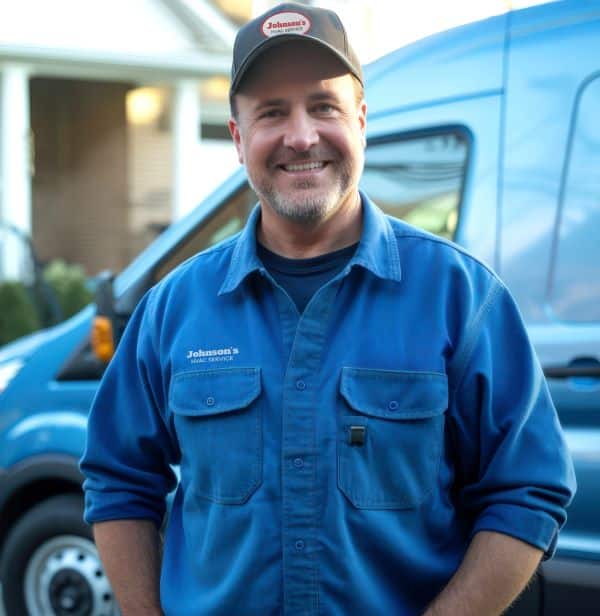How to Determine the Ideal Customers for Your Plumbing Business
Here’s how to find your ideal customers for plumbing projects. Learn how to market your business for an increased customer base. Plus enjoy pro tips on how to retain existing customers.

Staff Contributor
Every business wants and needs growth. One of the best ways to increase your revenue is to find the ideal plumbing customers for your business.
When you know who your ideal customer is, you can market to them more effectively. You’re also more likely to get valuable word-of-mouth referrals and repeat business, too.
In this article, you’ll learn how to find your ideal customers. You’ll see how to market your business to an increased customer base. Plus, get pro tips on how to retain existing customers.
Put all these skills together, and you’ll crush the competition while creating the plumbing business you’ve dreamed about.
6 Types of Plumbing Customers You May Encounter

Before exploring how to find ideal customers for your plumbing business, there’s something else you should do. You must understand the different types of customers in your field.
Emergency Customers with One-Off Jobs
Many plumbers stay busy with emergency jobs. These are probably customers you have never worked with before. They call at all hours of the day and night when a pipe bursts or the sink backs up.
They just need to fix that one problem. But if you provide prompt, effective service, you can turn these customers into regulars.
Homeowners with Regular Work or Upgrades
Another way to fill your calendar is with homeowners who call several times per year needing work. They might want a new filtration system or a pressure regulator. Maybe they need to find a leak or help installing a garbage disposal.
Even better, some of these homeowners will want plumbing upgrades, such as:
- Installing a new sink and fixtures in the kitchen
- Adding or replacing a dishwasher
- Setting up a new refrigerator with a water line and ice maker
- Moving a clothes washer to a different location
- Redoing a bathroom, including relocating fixtures
Some of these remodels can be quite extensive, especially kitchens and baths. Therefore, they’re a significant source of revenue.
If the homeowner is happy with your work, they’ll call again for the next job. And they’ll refer you to neighbors, friends, and family.
Consider these statistics:
- Nearly 90% of people give a brand their highest trust when it comes recommended by someone close to them.
- More than a quarter of consumers will lose brand trust if a friend or family member tells a bad story about a company.
Small Business Clients
Small businesses in your community can also be a fountain of regular income. Most businesses have bathrooms or small kitchen areas. But some use plumbing as a more integral part of their business, including:
- Restaurants
- Florists and garden shops
- Laboratories
- Manufacturing facilities
- Farms and ranches
- Beauty salons and spas
- Health clubs
- Pet grooming centers
Like loyal homeowners, these clients will become regulars if you do good work for them. They’ll also become another source of word-of-mouth advertising.
Real Estate Agents
Form a relationship with a real estate agent, and you’ll have a direct line to all kinds of work. They may recommend you to sellers to fix up a place before listing it. Or they will give your name to new owners looking to update plumbing.
Rental Property Owners and Managers
People who own or manage properties, especially apartments, always need plumbers. They want someone who can quickly handle problems like:
- Clogged sinks
- Blocked or malfunctioning toilets
- Broken shower valves
- Hot water tank repair or replacement
- Leak detection
- Blocked sewer and drain lines
- Old fixtures that need upgrading
- Managing landscape irrigation systems
- Maintenance for code and inspection compliance
You could fill your appointment book with these clients if you make them happy. Don’t forget about vacation property owners and managers, including Airbnb owners. With high turnover, they often need plumbers between renters to keep things running smoothly.
Contractors and Construction Professionals
Another potential cash cow is builders and renovators, like contractors and new home builders. Once they find a plumber they like to work with, they tend to hire the same company again and again.
This is especially true if you help keep costs down. Working on a new development or major renovation can keep you in the black for months or years.
How to Define Your Ideal Customer

There are a couple of ways to define your ideal customer. You want to build your business to meet the needs of both categories discussed below.
Customer Needs in Your Area
First, you need to take a realistic look at what plumbing customers want in your location.
For instance, you might be in a rural area that’s struggling a bit. Homeowners there probably aren’t doing fancy kitchen and bathroom makeovers. They likely need nuts-and-bolts plumbing repairs, knowledge of septic systems, and irrigation work.
Are you in a large city? There are almost certainly more opportunities for high-end work there. And there are needs for plumbers who specialize in certain types of jobs, like:
- Plumbing for compact apartment bathrooms
- Luxury and trendy upgrades
- Mixed-use residential and business buildings
- Skyscrapers with water pressure and fire suppression issues
- Storm drainage for wide-scale paved areas
What’s the real estate market like in your city or town? Are homes turning over frequently? Are people spending on upgrades? Are there lots of renters or student properties? Are new developments going up?
Your Business and How It Operates
Now, take a look at your business, including these factors:
- Experience and portfolio of work
- Number of employees
- Structure of operation
- Profit and loss statements
- Current customer list
- Goals for the future
- Ability to add equipment or skills
Ask yourself:
- Is your plumbing business just you and another person, or do you have multiple employees?
- Do you have office staff to answer phones, dispatch technicians, and perhaps do some marketing?
- Where do the two categories overlap?
To make things clear, write out two columns on a notepad or whiteboard. Put your customers’ needs in one column. Place the details of your business in another. How do they match up? What are some pain points?
For example, you may not have enough technicians to handle all your calls, so you’re losing business to a competitor.
Or maybe you have a lot of ups and downs in your business cycle. Are they seasonal? Maybe they’re random and unpredictable. How can you fill in the slow periods to maintain consistent income?
What about financial goals? You may be content with the business the way it is now, but will that meet your goals in a year or five years? Do you need to raise prices or increase the volume of jobs?
Are you happy with the type of jobs you’re doing now, or would you like to expand? You might need to break into another specialty. What would that take? Perhaps it’s more training, new equipment, another vehicle, or a way to attract customers in that niche.
Create a Customer Persona
Finally, take all the information you’ve gathered above and create a persona of your ideal customer. It could be a profile for the type of customer you’re already serving. Or it might be a customer persona for an entirely new area of business.
You should be able to answer these questions about them:
- Are they business or residential customers?
- What type of property needs work?
- What kind of plumbing job does this customer need?
- What would the customer expect to pay for your work?
- What are some other details about this customer?
Here’s an example:
- Residential customer
- Single-family homes in an affluent part of town
- Major repairs and installations, like new hot water tanks and leak detection systems, and high-quality kitchen plumbing upgrades in historic homes
- Basic service call charge of $129, plus parts and hourly labor (price is not a barrier to service)
- Average age is between 40 and 55 years old.
- Many own second homes, and there is an interest in sustainable plumbing and water conservation.
Effective Marketing Techniques to Attract the Ideal Customer

Imagine you decide you need more customers to meet your financial goals. Specifically, you’d like to add a certain type of customer to your roster, like the one profiled above.
The next step is figuring out how to bring them in.
Use these marketing techniques to help attract your perfect customer. Your marketing efforts will be oriented around their unique characteristics.
Traditional Marketing
If you were around before the age of the internet, you may be familiar with traditional marketing. This includes print marketing, as well as several other methods.
Traditional marketing can work quite well in some markets, particularly if your customers are a little older. If you work with a lot of seniors, you definitely want to consider conventional marketing techniques. These include:
- Magazine and newspaper advertisements
- Radio and TV ads
- Printed flyers and coupons
- Billboards, signs, and vehicle decals
- In-person marketing
Marketing your plumbing business in person might mean joining the same golf or swim clubs as your customers. It could also be networking through membership groups like Rotary or the Lion’s Club.
Another great way to network and get your company’s name out there is to support local charities and teams. You can usually get a program ad or banner by donating.
Don’t forget the value of referrals from existing customers. As mentioned above, those recommendations are like gold for your plumbing business. You can read more about this in the next section below.
Digital Marketing
Digital marketing has many advantages:
- It’s nearly always cheaper than traditional marketing.
- You can change directions or make adjustments instantly.
- Your business can reach customers faster.
- You can market to people on the go via their mobile devices.
There are multiple elements to digital marketing, including:
- Business website (see more below)
- Online advertisements
- Social media posts and ads
- Text message marketing
- Online editorial content
- Podcasts and video marketing
- Email marketing
- Online review sites
Responsive Website
Your plumbing business’s website is perhaps the most important aspect of a digital marketing campaign. A website lets new customers find you online, whether they’re having a plumbing emergency or want to makeover a bathroom.
A professional website also lends legitimacy to your business. You can showcase your work there and offer plumbing advice through blog posts.
Your website should be responsive. That means it’s optimized for any device, not just a desktop computer or laptop.
As of 2021, 85% of Americans own a smartphone. That number has likely increased over the last few years.
Many people shop for plumbers on their mobile phones. You don’t want to miss opportunities by having a website that’s hard to see or navigate on a cell phone.
Search Engine Optimization (SEO)
Your website should also be search engine optimized. SEO means including certain keywords and phrases that people commonly use in online searches for plumbers.
Including those keywords on your website will help it rank higher with online search engines like Google. A higher ranking means customers find you more quickly when they need a plumber.
Another important part of SEO is using your location on your website. Mention your city or town, as well as your county, state, and a few local landmarks. This can also help boost your business to the top of search listings.
Creating a Sales Funnel
Be sure to have a place on your website to collect email addresses. You can ask visitors to subscribe to your blog or leave their email in return for a free downloadable plumbing guide.
Once you have an email list, you can market to those people online. This tactic is known as building a sales funnel of prospective customers. It’s easy to do this using free or low-cost automated email services.
Ideally, you want potential clients in all phases of the funnel. It starts with “just browsing” and ends with “ready to sign a contract for plumbing work.” When your sales funnel is full, you always have a customer in the “on deck circle” once another job is complete.
Build Lasting Relationships to Boost Your Plumbing Business

Repeat business should be a mainstay of your plumbing business. You always want to keep up existing customer relationships while attracting new customers.
Building lasting relationships is good for your sales funnel. And, of course, repeat customers are a great source of word-of-mouth advertising. This is the kind of marketing you can’t pay enough for anywhere else.
How do you keep customers coming back year after year? Here are five tips to help get the kind of repeat business you crave:
1. Check in with your customers periodically.
You can ask how a job is holding up or if they have any new plumbing issues. People like the personalization of follow-up as long as you’re not making a pest of yourself.
2. Give existing customers financial incentives.
You might give them a discount on their next service. Or you can offer a loyalty club, where customers get a sixth job for a discounted rate after they call you five times.
3. Ask if you can feature their project on your website.
If you do a major remodel, why not showcase it for future clients? Using a customer as an example of good work will also make them feel special and more likely to return in the future.
4. Keep your customers up to date on new trends.
You can accomplish this via your blog or a newsletter. Customers may be interested in things like greywater recycling and leak alerts. Maybe they want voice-activated fixtures or energy-saving on-demand water heaters.
5. Use customer relationship management (CRM) software to help with time-consuming tasks.
Keeping track of customers in your sales funnel doesn’t have to be complicated. You can leverage the power of software to manage marketing so you can focus on plumbing work that brings in money.
Misty has been providing engaging content and design for a variety of publications since 2000. When she's not poring over words, she's usually making art, hoarding music and spending time outdoors with her family.

Business Solutions For Field Service Pros
EverPro offers specialized solutions designed for home and field service professionals. We’ve got the business tools to help you get the job done.



